-
Posts
25,590 -
Joined
-
Days Won
154
Content Type
Profiles
Forums
Events
Store
Posts posted by Joker
-
-
ooh nice that my next ride 2003+ 3.0r
there are a few is Clunt back yet? (a '6' ina GTB like mine) and Keltic Kiwi has just changed his BH '6' into a Manual
-
I call mine Undies...
-
-
Jokerboss
-
my button dont work so didnt work for me anyone no if there is a factory code or all different?? i guess they would so others cant get into any subaru
you will need new key fob and there is a procedure to learn it to your car
Older GT Legacies obviously skip the key-fob step
LOL @ Jase - its ok mate, its a Legacy thing.... you'll never understand!
-
I think its the snorkel in the inner guard he is referring to
-
OR Zero sports Sequential turbo controller OR Apexi-AVC-r ( Electronic Boost controller) are very good at controlling switch over
OR Both for an even better result
both available from Club Sponsor www.41.co.nz
-
Borrowed from http://www.mr2.org.nz/phpBB2/viewtopic.php?t=5248&sid=90ebb01690206ce77b3d0e495262f6df
For those of you that want to buy a helmet for motorsport, sorry this is not easy to under stand but it is the right information(�I) All occupants of vehicles entered in any of the following Events shall wear protective helmets;
(a) Sporting Trials, Regularity Trials, Speed Events, or
© Rallies, and
(d) Any practice sessions for the above.
Motorsport NZ recommends the use of full- face helmets complete with visors. Should a competitor choose to use an open face helmet, then goggles or visor manufactured from shatterproof material shall be used (not required in vehicles equipped with a full size
(2) Requirements: Protective helmets shall;
(a) Comply with a current approved standard,
(b) Be a good Fit on the wearer so they are secure when worn,
(c Be in good condition, and
(d Not be modified, except as specifically permitted by the helmet manufacturer, in particular;
(ii ABS and Polycarbonate helmets shall not be painted,
(ii) Composite shell helmets may only be painted with a paint approved by the helmet manufacturer,
(iii) Intercom earphones and microphones should only be fitted in helmets specifically designed for their fitting. In all cases when fitting speaker(s) care must be taken to ensure that they do not create a hazard for the wearer.
(3) Helmet Fit Test: The helmet must not be able to be removed by lifting the back of the helmet. (Refer drawing 4.1.1)
(4) Approved Standards:
(a) International Events: Vehicle occupants shall wear protective helmets approved to any of the following standards:
Snell Foundation mc;
Snell SA 2000.
Snell SA 95 (valid until 31/12/OS),
SF1 Foundation mc;
SF1 Spec 31.1A (open face design), or
SF1 spec 31 .2A (closed face design)
British Standards Institute;
BS6658-85 type A/FR (red label), including
all amendments.
(b) All Other Events: vehicle occupants shall wear protective helmets approved to any of the standards detailed in (a) of this article or one of the following standards;
Snell Foundation (cc;
Snell SA 90
M90
M95
M2000
SH Foundation Inc;
SF1 Spec 31.1 (open face design), or
SF1 spec 31.2 (closed face design)
British Standards Institute; 856658-85 type A (blue label) including amendments
European Standard (R22); �E� Mark, 02,03,04 or 05 series.
Note: A production number, e.g. 05,12345, will immediately follow these identification numbers.
New Zealand Standard; NZS 5430
Aust (�I) All occupants of vehicles entered in any of the following Events shall wear protective helmets;
(a) Sporting Trials, Regularity Trials, Speed Events, or
© Rallies, and
(d) Any practice sessions for the above.
Motor Sport NZ recommends the use of full- face helmets complete with visors. Should a competitor choose to use an open face helmet, then goggles or visor manufactured from shatterproof material shall be used (not required in vehicles equipped with a full size
(2) Requirements: Protective helmets shall;
(a) Comply with a current approved standard,
(b) Be a good Fit on the wearer so they are secure when worn,
(ci Be in good condition, and
(di Not be modified, except as specifically permitted by the helmet manufacturer, in particular;
(ii ABS and Polycarbonate helmets shall not be painted,
(ii) Composite shell helmets may only be painted with a paint approved by the helmet manufacturer,
(iii) Intercom earphones and microphones should only be fitted in helmets specifically designed for their fitting. In all cases when fitting speaker(s) care must be taken to ensure that they do not create a hazard for the wearer.
(3) Helmet Fit Test: The helmet must not be able to be removed by lifting the back of the helmet. (Refer drawing 4.1.1)
(4) Approved Standards:
(a) International Events: Vehicle occupants shall wear protective helmets approved to any of the following standards:
Snell Foundation mc;
Snell SA 2000.
Snell SA 95 (valid until 31/12/OS),
SF1 Foundation mc;
SF1 Spec 31.1A (open face design), or
SF1 spec 31 .2A (closed face design)
British Standards Institute;
BS6658-85 type A/FR (red label), including
all amendments.
(N All Other Events: vehicle occupants shall wear protective helmets approved to any of the standards detailed in (a) of this article or one of the following standards;
Snell Foundation (cc;
Snell SA 90
M90
M95
M2000
SH Foundation Inc;
SF1 Spec 31.1 (open face design), or
SF1 spec 31.2 (closed face design)
British Standards Institute; 856658-85 type A (blue label) including amendments
European Standard (R22); �E� Mark, 02,03,04 or 05 series.
Note: A production number, e.g. 05,12345, will immediately follow these identification numbers.
New Zealand Standard; NZS 5430
Australian Standard
AS 1698
American National Standard;
ANSIZ -90.1- 1992
(5) Inspection: A Scrutineer or Technical Officer may check helmets at any time during an Event. Where there is doubt about the helmet�s fitness, the Chief Scrutineer or Technical Officer may impound the helmet for the duration of the Event.
(6) Recommendations:
(a) Neck braces should be used. They help restrict head movement in an impact reducing the possibility of neck injuries.
(is) In the case of a severe impact the helmet should be destroyed so it cannot be
reused.
(c Helmets should be replaced at least every seven years.
(d) Use a helmet bag to protect helmets.
(e) Store helmets in a dark and dry location.
(f) Don�t share or loan helmets.
OR See NZ Motor Sport Manual Book 1 Page: 160 for more infomation
To give a quick summary (Im also a scrutineer):
Helmet - tidy condition, to standard AS1698 (thats the most common standard). I have included a full list at the bottom of this post however.
Overalls - 100% cotton is a must, no polycotton allowed! Ideally pockets sewn up if they have holes through to underlayer. Most clubsport events are ok with just taping the pockets shut.
Fire Extinguisher - needs to be mounted to the floor with a retaining system incorporating quick release metal fastenings/straps, or material of equivalent strength (ie Kevlar), secured to the structure of the vehicle by a minimum of two 6mm bolts with panel washers and locknuts. Please note that you should be able to reach the fire extinguisher from your seated position. So that means dont put it behind your seat/in the boot etc....
Other than that you need closed toe shoes - which pretty much means wear shoes, not jandals.
HELMET STANDARDS:
(a) International Events: Vehicle occupants shall wear protective helmets approved to
any of the following standards:
Snell Foundation Inc;
Snell SA 2005
Snell SA 2000.
SFI Foundation Inc;
SFI Spec 31.1A (open face design), or
SFI spec 31.2A (closed face design)
British Standards Institute;
BS6658-85 type A/FR (red label), including all amendments.
(b) All Other Events: Vehicle occupants shall wear protective helmets approved to any of
the standards detailed in (a) of this article or one of the following standards;
Snell Foundation Inc;
Snell SA 95
M95
M2000
M2005
SFI Foundation Inc;
SFI Spec 31.1 (open face design), or
SFI spec 31.2 (closed face design)
British Standards Institute;
BS6658-85 type A (blue label) including all amendments
European Standard (R22);
‘E’ Mark, 02, 03, 04 or 05 series.
Note: A production number, e.g. 05,12345, will immediately follow these identification
numbers.
Australian Standard;
AS 1698
Jarrad can we perhaps sticky something along the lines of what I have written above for people interested in doing trackdays? I am happy to write up something more detailed/fancier etc.
-
-
-
Who's Online 0 Members, 0 Anonymous, 80 Guests (See full list)
- There are no registered users currently online

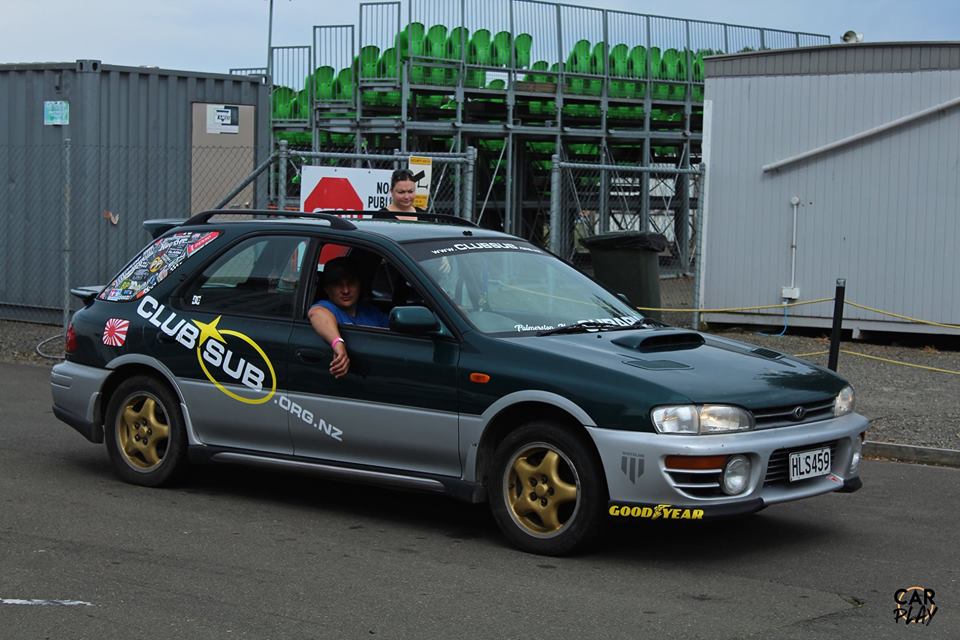




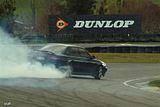
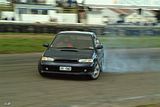
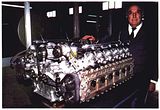
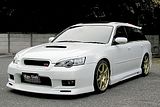

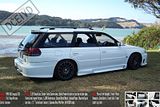
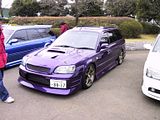
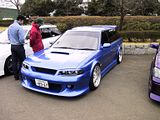
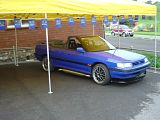
Cold Air Box
in Engine Related
Posted
er black attracts heat in the form of light waves (UV/sunlight) not heat from radiant source
BUT paint will keep it warmer for longer